
In the late 1980s, I carved out space for my first vegetable garden from a 1-ft. wide strip of soil between my apartment patio and a fence. I did my best to squeeze some green beans and a few tomato plants into that little space. Today, with that same limited space, I can grow dozens of mini vegetable varieties.
MEET THE EXPERT
CAROL J. MICHEL, AN AWARD-WINNING AUTHOR, ALSO HAS A BLOG CALLED MAY DREAMS GARDENS.
WHAT ARE MINI VEGETABLES?
Mini vegetables, also referred to as dwarf or compact vegetables, are vegetable plants that are much smaller than their standard counterparts. According to Josh Kirschenbaum, PanAmerican Seed vegetable accounts manager, no parameters are set for what defines a dwarf vegetable, but they are notably smaller than a standard-size vegetable and can perform well in a container.
Like full-size vegetable plants, dwarf or mini vegetable plants usually require full sun. When they're grown in containers, you'll also need to water them more frequently as often as once or twice a day during the hottest days of summer, depending on the size of the container. You'll also need to fertilize them more often because frequent watering quickly leaches out the nutrients the vegetables need to thrive.
A LITTLE HISTORY
As Jen McGuinness noted in her book Micro Food Gardening: Project Plans and Plants for Growing Fruits and Veggies in Tiny Spaces, people are moving to cities, and by 2050, well over half of us will live in an urban environment. Fortunately, the plant industry recognizes this, and plant breeders at companies such as PanAmerican Seed started breeding dwarf vegetable varieties about 15 years ago with a focus on those that grow well in both containers and hydroponic systems, such as the AeroGarden.
WHY GROW MINIS?
This story is from the {{IssueName}} edition of {{MagazineName}}.
Start your 7-day Magzter GOLD free trial to access thousands of curated premium stories, and 9,000+ magazines and newspapers.
Already a subscriber ? Sign In
This story is from the {{IssueName}} edition of {{MagazineName}}.
Start your 7-day Magzter GOLD free trial to access thousands of curated premium stories, and 9,000+ magazines and newspapers.
Already a subscriber? Sign In

7 Bicycle Maintenance Tips
Keep your bike in tiptop shape and ride safe!
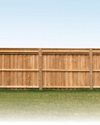
SETTING FENCE POSTS WITH EXPANDING FOAM
Any fence builder knows you need strong posts for a strong fence, and that means backfilling the postholes with a dense, hard material other than dirt.

PEBBLE MOSAIC STEPPING STONES
COLLECT SOME RIVER ROCK AND MAKE YOUR OWN UNIQUE STEPPINGSTONE PATH
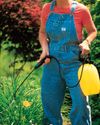
EARTH-FRIENDLY WEED KILLERS
HEALTHIER CHOICES FOR HUMANS AND THE ENVIRONMENT
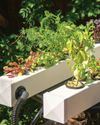
DIY! HYDROPONIC GARDEN
FRESH VEGETABLES AT YOUR FINGERTIPS
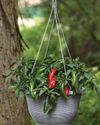
GROW MINI VEGETABLES
GROW A GARDEN IN A TINY SPACE!
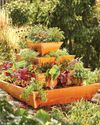
BUILD A VERTICAL GARDEN
TIME TO GROW UP!

MODERN WATER FOUNTAINS
A SPLASH OF PEACE FOR YOUR PATIO

9 ALTERNATIVE USES FOR SAWDUST
Every fully stocked wood shop has a table saw. You can usually find a pile of sawdust under it, even if it's used only occasionally. If a shop has a belt sander or band saw, there's probably another pile of finer sawdust under that. Even people without stationary tools have sawdust accumulation on their workbenches.

INSULATE WITH FOAM
IT'S A GREAT ALTERNATIVE TO FIBERGLASS